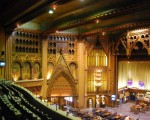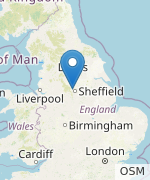Dream Palaces: an introduction to cinema architecture
Mike Higginbottom
- Region:
- Anywhere
- Notice Period:
- Emergency (maybe less than one week's notice)
- Type:
- Architectural and social history
- Fee:
- Paid: Dependent on size of audience and distance travelled from South Yorkshire
- Category:
- History
- Updated:
- 23rd November 2017
- Tagged:
- Cinemas | Picture Palaces | Art Deco
This lecture surveys the way purpose-built cinema buildings developed after the passing of public-safety legislation in 1909. The significance of cinema buildings in the development of twentieth-century British architecture arises from the dominance of “going to the pictures” in the nation’s social life from the time of World War I until the arrival of television in the 1950s. In the course of three decades, exterior styles changed from elaborate imitations of Victorian Edwardian theatres to the sleek streamlining that is now labelled Art Deco, while interiors ranged from elaborate “atmospheric” creations and scholarly architectural revivals to stunning essays in modernity making maximum use of indirect lighting. A surprising amount of cinema architecture has survived the slump in the industry that followed the development of television, and the finest examples represent some of the best of inter-war British architecture.
Views: 2135 | Enquiries: 0About Mike Higginbottom
I am a Sheffield-based freelance history lecturer specialising in the nineteenth and twentieth centuries with a background in university extramural education.
I offer distinctive, life-enhancing insights into the past, particularly the recent past, for people who enjoy visiting places and recognising the human stories behind this historical heritage.
I lecture for the Arts Society (formerly the National Association of Decorative & Fine Arts Societies [NADFAS]) in the UK, Spain, Australia and New Zealand.
Whether lecturing, writing or guiding tours, I provide detailed information in a lucid and entertaining way. My publications and lectures are copiously illustrated, as much as possible using my own photography.
Mike Higginbottom Interesting Times is the brand for my history education work – tours, lectures and publications. My blog is a fund of interesting, sometimes quirky insights into places, people and historical events.
I'm based in Sheffield and willing to travel anywhere in the UK or further afield.
Other Talks on SpeakerNet by Mike Higginbottom
- The Big Apple: the architecture of New York City
- Windy City: the architecture of Chicago
- St Pancras Station & Hotel
- Liverpool's Heritage
- Manchester's Heritage
- Fun Palaces: the history and architecture of the entertainment industry
- All the World's a Stage: the development of theatre buildings
- Away from it all: the heritage of holiday resorts
- Beside the Seaside: the architecture of British coastal resorts
- Blackpool's Seaside Heritage
- Yorkshire's Seaside Heritage
- Victorian Cemeteries
- Victorian Sewerage
- Temples of Sanitation
- English Country Houses – not quite what they seem
- Sheffield's Cinema Heritage
- Demolished Sheffield
- A Look Round Attercliffe
- Waterways and Railways across the Derbyshire Peak
- Waterways and Railways across the Northern Pennines
- Waterways and Railways between Thames and Severn
- The Derbyshire Derwent Valley
Send a message to the speaker
If you are interested in this talk and wish to contact the speaker, please complete the following form:


